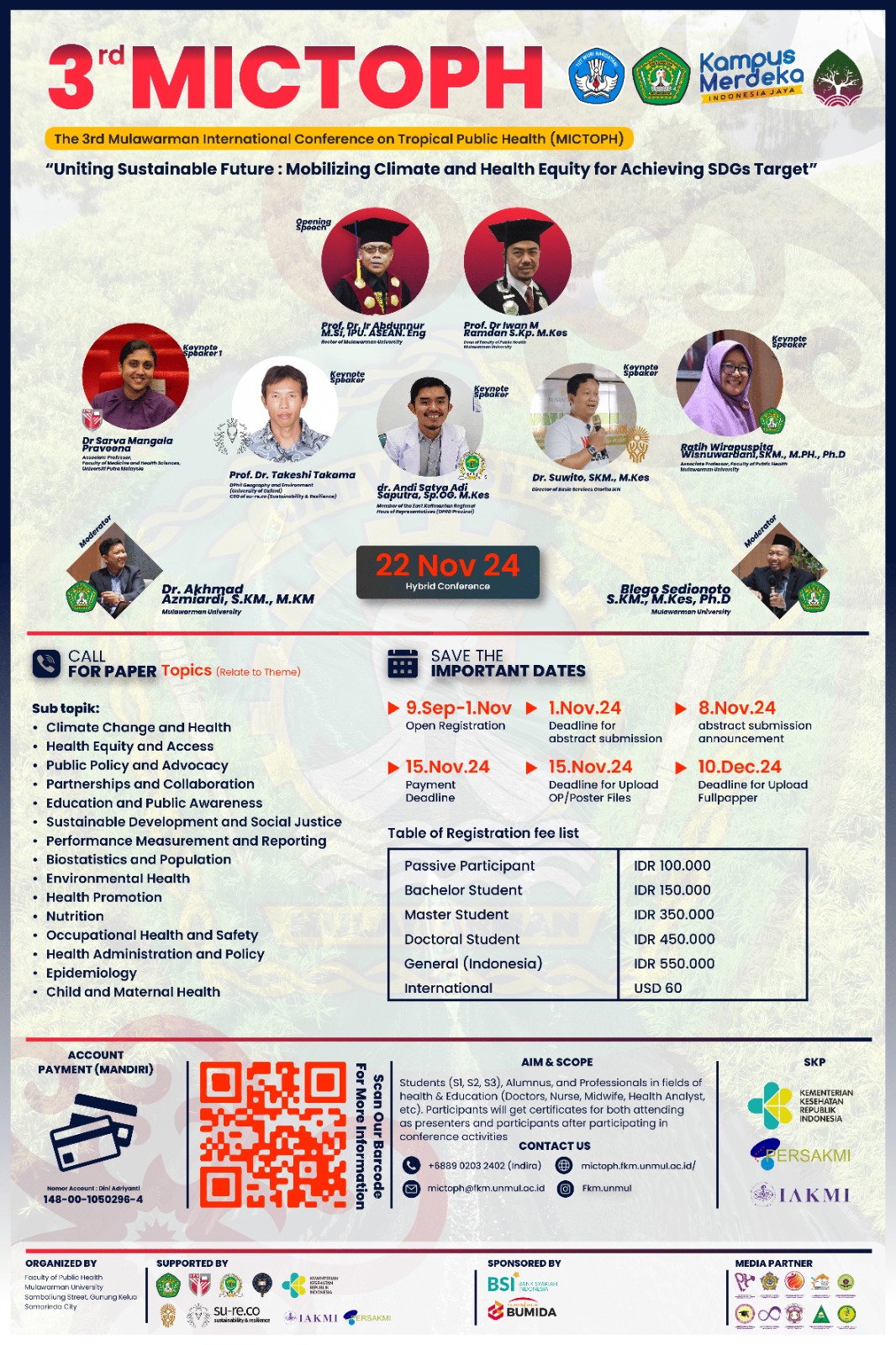Factors Influencing the Incidence of Stunting: A case-control study at Balikpapan Primary Healthcare
Keywords:
Stunting, mother's education, characteristic socio demographiAbstract
Background : Stunting is a serious health issue in Indonesia, with long-term impacts on children’s development. This study aims to identify factors associated with stunting incidence at the Balikpapan Health Center Objective : Research Methods/ Implementation Methods : TThis case-control study was conducted at UPTD Puskesmas Gunung Sari Ulu, Balikpapan, in August 2023. A total of 30 respondents (15 stunting cases and 15 controls) were selected through purposive sampling. Stunting measurement was conducted using anthropometric methods, while data on age, gender, maternal education, and maternal employment were obtained from secondary data at the health center. Data analysis was performed using chi-square tests to assess the relationship between variables. No association was found between child gender and stunting (P-value = 1). Mothers with low education levels had a 1.313 times higher risk of having stunted children (P-value = 0.713). Although not statistically significant, non-working mothers had a 2.364 times higher risk of having stunted children compared to working mothers (P-value = 0.651). Conclusion/Lesson Learned : No significant relationship was found between child gender, maternal education level, and maternal employment status with stunting incidence. Maternal education and employment status are identified as risk factors for stunting, while child gender did not show a difference in risk.





